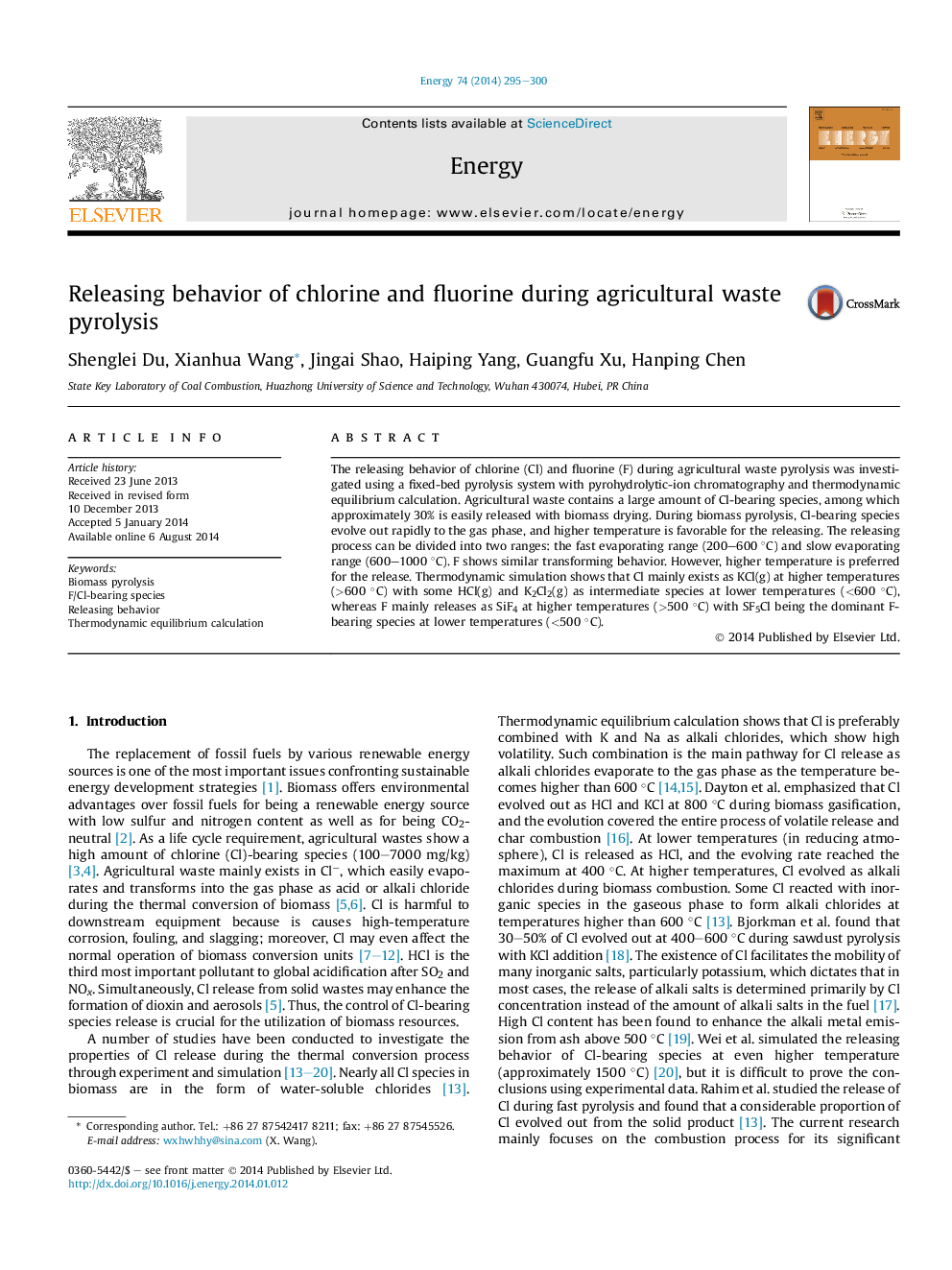| کد مقاله | کد نشریه | سال انتشار | مقاله انگلیسی | نسخه تمام متن |
|---|---|---|---|---|
| 1732463 | 1521472 | 2014 | 6 صفحه PDF | دانلود رایگان |
• The releasing behavior of fluorine during biomass pyrolysis was first studied.
• The proportions of Cl and F in different products were examined.
• Experiment and simulation were conducted to study the in-depth mechanism.
The releasing behavior of chlorine (Cl) and fluorine (F) during agricultural waste pyrolysis was investigated using a fixed-bed pyrolysis system with pyrohydrolytic-ion chromatography and thermodynamic equilibrium calculation. Agricultural waste contains a large amount of Cl-bearing species, among which approximately 30% is easily released with biomass drying. During biomass pyrolysis, Cl-bearing species evolve out rapidly to the gas phase, and higher temperature is favorable for the releasing. The releasing process can be divided into two ranges: the fast evaporating range (200–600 °C) and slow evaporating range (600–1000 °C). F shows similar transforming behavior. However, higher temperature is preferred for the release. Thermodynamic simulation shows that Cl mainly exists as KCl(g) at higher temperatures (>600 °C) with some HCl(g) and K2Cl2(g) as intermediate species at lower temperatures (<600 °C), whereas F mainly releases as SiF4 at higher temperatures (>500 °C) with SF5Cl being the dominant F-bearing species at lower temperatures (<500 °C).
Journal: Energy - Volume 74, 1 September 2014, Pages 295–300
